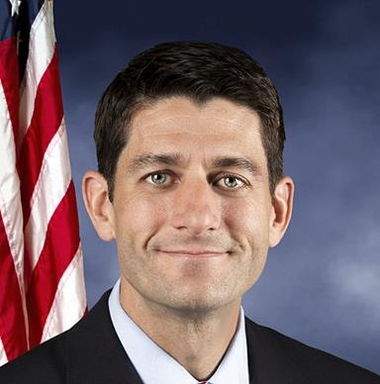Ryan unveils House GOP budget claiming balance

Washington (AP) — House Budget Committee Chairman Paul Ryan unveiled an updated Republican budget plan Tuesday that would slash $5.1 trillion in federal spending over the coming decade and promises to balance the government's books with wide-ranging cuts in programs like food stamps and government-paid health care for the poor and working class.
Ryan's plan would also cut Pell Grants for low-income students and pensions for federal workers, while steering away from cuts to benefits for senior citizens, at least in the short term. The proposal would reprise a voucher-like Medicare program for future retirees that is the basis for GOP claims that the measure would drive down government debt over the long term. It also relies on unofficial scorekeeping help from the Congressional Budget Office, reflecting the beneficial effects of deficit cuts on long-term economic growth and tax revenues.
The plan should skate through the Budget Committee on Wednesday but faces challenges on the floor next week since it endorses a bipartisan pact — negotiated by Ryan and Senate Budget Committee Chairman Patty Murray, D-Wash., in December — to increase agency operating budgets this year and next.
Many conservatives who opposed the pact last year would have to reverse course and embrace them as part of the GOP budget. Democrats who helped pass the Ryan-Murray pact in December will oppose the GOP plan.
The legislation promises to serve more as a political and policy statement by House Republicans than a realistic attempt to engage President Barack Obama and Democrats, who control the Senate, in any serious effort to further cut the deficit. Election-year politics are in play, for starters, as are entrenched differences over spending and taxes.
At issue is the arcane congressional budget process, which employs a non-binding measure known as a budget resolution to set forth goals for future taxes, spending, and deficits. But follow-up legislation is usually limited to one-year appropriations bills rather than more difficult measure to deal with the government's long-term fiscal challenges, which are fueled by spiraling health care costs and the retirement of the baby boom generation.
Ryan's budget brings back a now-familiar list of spending cuts to promise balance, including $2.1 trillion over 10 years in health care subsidies and coverage under the Affordable Care Act, $732 billion in cuts to Medicaid and other health care programs, and almost $1 trillion in cuts to other benefit programs like food stamps, Pell Grants, and farm subsidies.
As in the past, Ryan has steered clear of cuts to Social Security and promises steady increases for veterans. But he faced a more challenging task to promise to balance the budget by decade's end than he did last year because the CBO projects lagging revenue estimates.
Ryan's budget claims balance by 2024, but relies on $74 billion in savings in that year from the macroeconomic effects of cutting deficits, which CBO says would have a long-term positive effect because it would free up savings and investment capital. Democrats are sure to seize on the maneuver as phony math; without these projections, however, Ryan's budget plan would fall almost $70 billion short of balance.
Earlier versions of Ryan's plan have passed the House three times since the GOP seized control of the chamber following the 2010 mid-term elections. This year's version may prove more controversial because it begins to implement cuts to future Medicare beneficiaries. Under the plan, people who enroll in Medicare in 2024 would be given a subsidy — dubbed "premium support" by Republicans, derided as a voucher system by Democrats — with which they would purchase health insurance on the open market.
Republicans say the system is required to prevent the budget from spiraling out of control as more and more Baby Boomers retire and the present system collapses and that the redesigned Medicare program would offer seniors more choices and curb costs. Critics, however, say the Medicare subsidies won't keep up with inflation and will require sharply higher out-of-pocket costs for future seniors.
The Ryan plan also promises cuts to the federal workforce, a termination of Saturday mail delivery and the elimination of subsidies for money-losing flights into rural airports. Those cuts have proven difficult to implement.
by Andrew Taylor, Associated Press
Copyright 2014 The Associated Press. All rights reserved. This material may not be published, broadcast, rewritten or redistributed.
The Gayly – April 1, 2014 @ 10:30am





